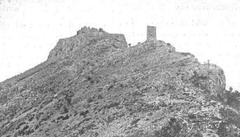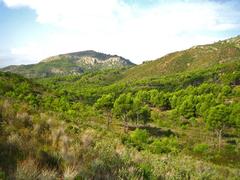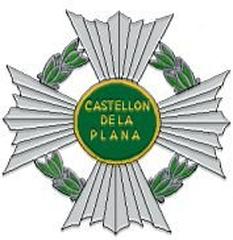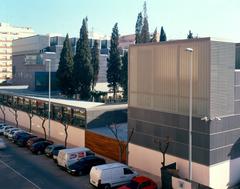
Port of Castelló Visiting Hours, Tickets, and Historical Sites Guide
Date: 04/07/2025
Introduction: The Port of Castelló’s Significance
Positioned along Spain’s Mediterranean coast, the Port of Castelló (PortCastelló) is a dynamic maritime gateway that fuses centuries of history, economic influence, and cultural vibrancy. Established in the early 20th century, it has evolved from a modest commercial facility into one of Spain’s leading ports, connecting more than 100 countries. Strategic investments in infrastructure, sustainability, and the blue economy have transformed Castelló’s port into a model for modern maritime operations (PortSEurope, Portsur Castellón, Comunitat Valenciana).
Beyond trade, Castelló’s port area—anchored by the bustling maritime district of El Grau—offers lively festivals, authentic gastronomy, accessible leisure facilities, and a wealth of historical sites. Whether you’re coming to observe maritime logistics, participate in local events, or simply enjoy the Mediterranean atmosphere, this guide provides essential information on visiting hours, ticketing, accessibility, and cultural highlights.
Contents
- Historical Development of the Port of Castelló
- Economic Significance and Blue Economy
- Visiting Information: Hours, Tickets, and Accessibility
- Top Attractions and Things to Do
- Festivals and Cultural Events
- Practical Visitor Tips
- Frequently Asked Questions (FAQ)
- Conclusion and Official Resources
Historical Development of the Port of Castelló
Foundations and Expansion
While Castelló de la Plana’s roots extend to the 13th century, the port’s modern chapter began in the early 1900s with the establishment of Gimeno Marítimo, catalyzing the region’s commercial ambitions (Portsur Castellón). Major expansion occurred in the early 2000s, notably with Portsur’s development and the consolidation of bulk cargo facilities. Further mergers have unified port operations, now overseeing extensive berths and logistics areas capable of accommodating large vessels and diverse cargo.
Strategic Role as a Mediterranean Gateway
Located about 65 km north of Valencia and mere kilometers from Castelló’s city center, PortCastelló is a key node linking Spain with the Mediterranean basin, Africa, the Middle East, and beyond (PortSEurope). Regular maritime services and a 4-million-square-meter logistics platform, paired with an intermodal station, facilitate multimodal global trade.
Governance and Modernization
Managed by the Autoridad Portuaria de Castelló under the national Puertos del Estado system, the port benefits from state-level policy, innovation, and infrastructure investment. Recent projects—such as new rail access, sustainability initiatives, and expanded liquid bulk facilities—underscore the port’s commitment to competitiveness and environmental stewardship (PortSEurope).
Economic Significance and the Blue Economy
Cargo and Trade
PortCastelló processes over 20 million tonnes of cargo yearly, with robust growth in container and bulk traffic. The port services a wide range of industries, from ceramics and chemicals to agricultural products, and continues to attract new shipping lines and business partners (PortSEurope).
Investment and Infrastructure
The port’s €79.8 million investment plan for 2025 focuses on capacity expansion, sustainability, and advanced logistics. Key stakeholders like Portsur and Sevitrade are expanding their operations, ensuring continued job creation and supply chain growth (Portsur Castellón).
Blue Economy and Tourism
PortCastelló actively promotes sustainable maritime tourism, yachting, and cruise activities. It is establishing itself as a “slow tourism” destination, hosting conferences on the blue economy and offering unique experiences away from crowded cruise hubs (MedCruise). The marina’s modern facilities and proximity to beaches and mountains make it a favorite among recreational sailors (Comunitat Valenciana).
Visiting Information: Hours, Tickets, and Accessibility
General Visiting Hours
- Port and Marina Areas: Open daily, typically 8:00 AM–8:00 PM (seasonal variations may apply)
- Fish Market (Lonja de Pescado): Monday–Friday, 6:00 AM–2:00 PM (best visited early morning)
- Castellón Planetarium: Tuesday–Sunday, 10:00 AM–2:00 PM & 5:00 PM–8:00 PM; closed Mondays
- Marina Visitor Center: Monday–Saturday, 9:00 AM–6:00 PM
Tickets and Entry
- General Access: Most outdoor port and marina areas are free to enter
- Guided Tours & Special Events: Tickets may be required; book in advance via the Port Castelló official website or on-site at the visitor center
- Attractions (Planetarium, Boat Tours): Tickets available online or at attraction entrances (Castellón Turismo)
Accessibility
- Ramps and accessible walkways throughout port and marina
- Public transport (tram, bus), taxis, and bicycle rentals available for easy access
- Ample parking, though limited during peak events
Top Attractions and Things to Do
Grao de Castellón (El Grau): The Maritime District
A vibrant area blending commercial, fishing, and leisure activities. Key highlights:
- Paseo Marítimo: Palm-lined promenade with cafes and Mediterranean views
- Fishing Port & Market: Experience early-morning fish auctions and authentic seafaring culture (Castellón Turismo)
- Marina Port Castelló: Modern facilities for yachting, sailing lessons, and regattas
- Beaches: Playa del Gurugú and Playa del Pinar offer sunbathing, swimming, and water sports (Nomads Travel Guide)
- Planetario de Castellón: Interactive astronomy center with regular shows (Nomads Travel Guide)
Castelló Historical Sites Nearby
- Fadrí Tower: 16th-century bell tower with panoramic city views
- Concatedral de Santa María: Gothic cathedral in the city center
- Museo de Bellas Artes: Regional art and ceramics museum
- Ribalta Park: Castelló’s largest urban green space
Gastronomy
- Seafood & Rice Dishes: Try arroz a banda, fideuà, and fresh local catches at portside restaurants (Castellón Turismo)
- Tapas & Local Specialties: Enjoy traditional Valencian tapas in El Grau and the city center (Nomads Travel Guide)
- Citrus Fruits & Olive Oil: Sample local orange desserts and quality olive oil (Turispanish)
- Horchata & Fartons: Refreshing traditional drinks and pastries
Festivals and Cultural Events
Fiestas de la Magdalena (March)
Commemorates Castelló’s founding with pilgrimages, fireworks, music, and traditional foods (Comunitat Valenciana).
Virgen del Carmen Festival (July)
Honors the patron saint of sailors with processions, boat parades, communal meals, and fireworks (Spanish Fiestas).
SOM Festival and Summer Events
The port hosts open-air concerts, artisan markets, and food fairs, especially during summer months (El Periódico Mediterráneo).
Sporting Events
Sailing regattas and fishing competitions, such as the Mapfre King’s Cup Regatta, attract participants and spectators from across Europe (Spain.info).
Practical Visitor Tips
- Best Time to Visit: April–October for festivals, beach weather, and outdoor events
- Family-Friendly: Beaches, planetarium, and boat tours offer activities for all ages (Tourist Places Guide)
- Language: Spanish and Valencian are official; English is common in tourism
- Currency: Euro (€); cards widely accepted
- Health & Safety: Emergency number 112; tourist info at Paseo Buenavista 28
- Accessibility: Barrier-free facilities, accessible transport, and restrooms throughout the port
Frequently Asked Questions (FAQ)
Q: What are the Port of Castelló’s visiting hours?
A: The port and marina are generally open daily from 8:00 AM to 8:00 PM; specific attractions (e.g., fish market, planetarium) have their own hours.
Q: Do I need tickets to visit?
A: General outdoor access is free. Guided tours, events, and certain attractions may require tickets—book online or at visitor centers.
Q: How do I get to the port from the city center?
A: Use the TRAM Castelló line, city bus, taxi, or bike. Car parking is available but limited during events.
Q: Is the port accessible for people with disabilities?
A: Yes, with ramps, wide walkways, and accessible restrooms.
Q: What local festivals should I attend?
A: The Fiestas de la Magdalena and Virgen del Carmen Festival are major highlights, along with summer concerts and regattas.
Conclusion
The Port of Castelló is a multifaceted hub where history, commerce, culture, and recreation converge. Its ongoing modernization and commitment to sustainability ensure both robust economic performance and a rewarding visitor experience. From early-morning fish auctions and historical sites to lively festivals and Mediterranean cuisine, visitors can immerse themselves in Castelló’s maritime heritage and vibrant local life.
For real-time updates, ticketing, and insider tips, download the Audiala app and follow official resources.
Official Links and Sources
- PortSEurope
- Portsur Castellón
- Comunitat Valenciana
- Castelló Tourism Portal
- Nomads Travel Guide
- MedCruise
- Spanish Fiestas
- El Periódico Mediterráneo
- Spain.info
- Turispanish
- Tourist Places Guide





